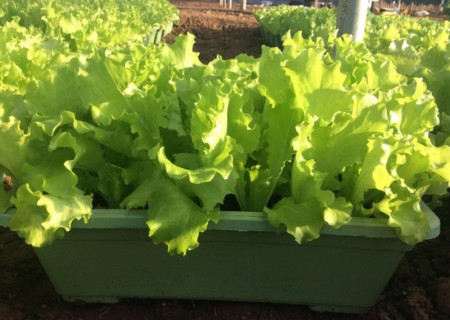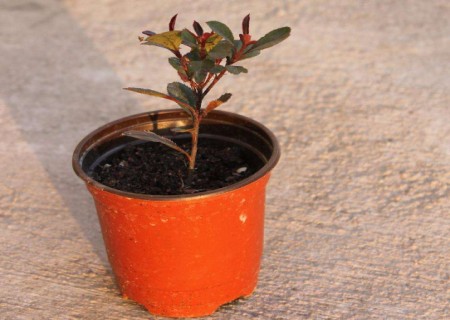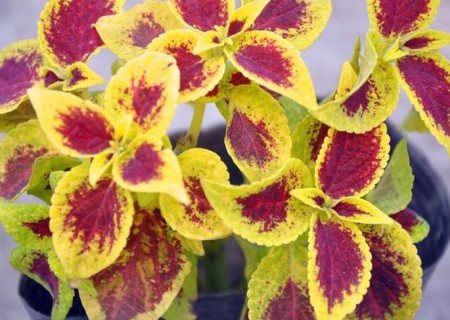Planting techniques of potted heading lettuce
Heading lettuce is a variety of lettuce, also known as glass lettuce or group lettuce. Leaves crisp, tender and refreshing, can be eaten raw, cold or dipped in sauce, is the top grade of lettuce; can also be fried, do Lentinus edodes lettuce, Sautéed Lettuce in Oyster Sauce, is the main vegetable used in western food salad. Heading lettuce is rich in nutrition and has hypnotic and analgesic effect. In recent years, heading lettuce not only meets the needs of foreign guests, but also begins to be eaten among Chinese residents, and the demand is increasing. Heading lettuce can be cultivated in both the north and south of China.

Cultivation containers:
A variety of flowerpots, boxes, artificial cultivation trough, the depth of 25 cm is appropriate.
First, raising seedlings
The seed consumption of heading lettuce is generally 25-30 grams per mu. Sowing can be carried out in greenhouses, greenhouses and small sheds. Sowing beds need well-structured, loose and moderate soil.
The proportion of nutrient soil is as follows: 2 parts of mature soil or spring onion and garlic stubble garden soil without vegetables, and 1 part of mature organic fertilizer. Organic fertilizer to choose horse dung and peat soil content, and add inorganic fertilizer, per cubic meter mixed with compound fertilizer 50 grams, fully mixed, and sifted.
The seeds should be treated before sowing, and the simple method is as follows: soak the seeds in gauze for about 1 hour, pick them up and put them at a temperature of 15-20 ℃ to accelerate germination; in summer, seedlings can be placed in the lowest layer of the refrigerator, and the temperature is controlled in the range of 5-10 ℃. After 2-4 days, the seeds can be sown after the white bud eyes are exposed. The seeds can also be soaked in 5 mg / kg gibberellin solution for 6-7 hours, or soaked in cytokinin 100 mg / kg for 3 minutes.
Spring and Autumn is the most suitable for cultivation. If planted in a high temperature period, the seeds need to be germinated. The method is as follows: first soak the seeds, wrap them in wet gauze, put them in a 15-20 ℃ refrigerator to accelerate germination, and after 2-3 days, 30% of the seeds will sprout, and then sow. The culture soil should be fine and loose, the seeds should be evenly scattered on the culture soil, and cover a thin layer of soil after sowing. Pay attention to heat preservation and moisturization. It usually sprouts 2-3 days after sowing. The seedlings were carried out about 2 weeks after sowing, and the weak seedlings and high seedlings were removed. Transplanting is carried out in 3-4 true leaves, and the seedling distance can be about 20 cm.
II. Colonization
The planted land will be turned over in the autumn of the first year, and the soil will be fully matured after winter weathering, and the soil will be raked next spring, properly applied organic fertilizer and mixed with calcium superphosphate and plant ash, and then raked flat the basin soil.
The day before planting, spray water on the seedbed to make the bed soil moist. When digging seedlings, try to bring more soil and less damage to the roots. Large and small seedlings should be planted separately to facilitate management, and 5% of Murray's 10% spare seedlings should be set aside for seedling replacement. Seedlings with strong growth, short internodes, broad petioles and no diseases and insect pests should be selected for planting.
When planting, if the temperature is low, we should choose the sunny and windless warm weather after cold weather, first plant seedlings and then irrigate, avoid flood irrigation, in case of substantial cooling, affecting the survival rate. The planting depth should be that all the roots are buried in the soil, and the soil should be pressed slightly to make the roots and soil sufficient.
Close contact, burying the soil should not be too deep pressure on the heart leaves, otherwise affect the normal fertility.
III. Management
1. Fertilizer and water management
Heading lettuce is a fertilizer-loving vegetable, which needs more nutrients during the whole growth period. Topdressing can be carried out in three times, slow planting and topdressing one time of available nitrogen fertilizer to promote leaf growth, 15-20 days after planting, nitrogen, phosphorus and potassium compound fertilizer is better, and heart leaves begin to hold balls after 30 days of planting. Apply compound fertilizer again to ensure the nutrients needed for leaf growth.
The amount of water required before heading is small, and the number of irrigation should be less. After irrigation with planting water, the seedlings were mainly ploughed and moisturized to ensure the water supply of the plants. The principle of irrigation is to keep the soil dry and wet. After entering the heading period, the water demand increases. In order to promote the rapid growth of the leaf ball, the ground should be kept moist and watered frequently, but the amount of water each time should not be too large. During this period, if there is no water, the leaf ball will be small, the taste will become bitter, and the quality will decline. After heading, the amount of irrigation should be controlled to avoid ball cracking and infection.
2. Ploughing and weeding
The heading lettuce cultivated in the open field after planting should often carry out soil loosening, shoveling and weeding in order to increase the soil temperature, ensure the good root system development and promote the growth of lettuce. The depth of middle tillage is easy to be shallow in the early stage and easy to be deep in the later stage, and manual weeding is the best for weeding, so it is not suitable to use mechanical or chemical agents to weed.
3. Shade and rain protection
The cultivation of heading lettuce in summer needs shade and rain protection, especially seedling raising in summer. Measures such as covering shade net on greenhouse film, non-woven fabric, cold yarn and so on can be adopted.
IV. Pest control
The main pests of heading lettuce are aphids, which can be controlled by killing EC or dimethoate EC, and can be eaten 7 days after spraying. Aphid control is best carried out before the pericardium, so as to avoid leaf pollution caused by too late control.
Diseases include soft rot, Sclerotinia sclerotiorum and virus. Carbendazim or dimethazone powder can be used to control soft rot and sclerotinia disease. Virus A wettable powder or antiviral agent No. 1 water agent and Tian Zengkang agent can also be used to control virus disease once every 10 days for a total of 3-4 times.
V. Harvest
Generally speaking, the heading lettuce is harvested in real time 25-35 days after heading. The harvest time should be early and not late, especially in spring and summer, the late harvest is easy to bolting, and the leaf ball is easy to rot and reduce the quality.
Key points of management technology:
The main results are as follows: 1. Heading lettuce requires moderate light intensity, and too strong and too weak are disadvantageous to its growth.
2. Different growth stages have different requirements for water. Over-dry seedlings at seedling stage are easy to aging, and too wet are easy to grow. Lettuce with too much water in the stage of leaf bulb formation is easy to crack and is susceptible to soft rot and sclerotinia disease. During the growing period, it is appropriate to keep the soil moist, watering once or twice a day, in the morning and evening. During the heading period, the water should be properly controlled and must not be stagnant.
3. From 6 to 7 days after planting, the available nitrogen fertilizer was applied thinly to promote the growth of hairy roots and leaves. When you start to wrap your heart, you should apply more phosphorus and potash fertilizer. Knot
4. Lettuce should often loosen the soil and weed during the growth period, but because the root system is not deep into the soil, the loosening soil should not be too deep, so as not to damage the root system. In addition, 0.2% urea and 0.2% potassium dihydrogen phosphate should be sprayed on the leaf surface of lettuce at the initial stage of the new leaf.
Time: 2019-05-24 Click:
- Prev

How to plant red leaf heather balls
Photinia rubra is famous for its bright red new shoots and tender leaves, and its red color lasts for a long time, and its germination ability is very strong. It can be tapped many times, and it is more and more loved by the majority of friends. In addition to dwarfing it into shrubs in garden applications to achieve embellishment.
- Next

How to grow potted coloreds
Colored clover colorful, variety, easy to reproduce, can do small flower display, placed on the windowsill and a few short appreciation. In addition to small-scale foliage display, can also be configured flower beds, flower baskets can also be used as flowers, bouquets with leaves. Colored clover is a very beautiful perennial foliage plant
Related
- Fuxing push coffee new agricultural production and marketing class: lack of small-scale processing plants
- Jujube rice field leisure farm deep ploughing Yilan for five years to create a space for organic food and play
- Nongyu Farm-A trial of organic papaya for brave women with advanced technology
- Four points for attention in the prevention and control of diseases and insect pests of edible fungi
- How to add nutrient solution to Edible Fungi
- Is there any good way to control edible fungus mites?
- Open Inoculation Technology of Edible Fungi
- Is there any clever way to use fertilizer for edible fungus in winter?
- What agents are used to kill the pathogens of edible fungi in the mushroom shed?
- Rapid drying of Edible Fungi

